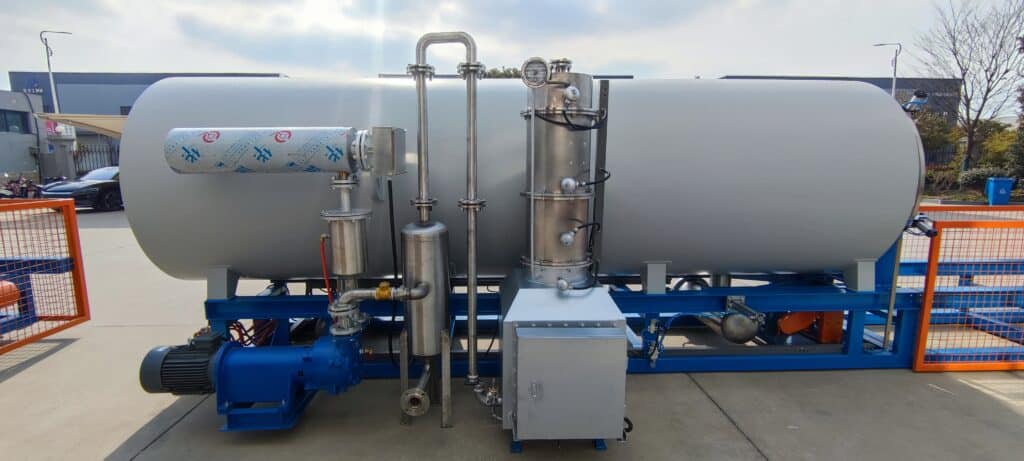In industries like chemical fiber, plastics, and metal processing, the vacuum cleaning furnace https://8ruiyan.com/en/all-vacuum-cleaning-furnaces/ is essential. It keeps critical parts like molds, spinnerets, and filters clean and like new. It works by using high temperatures and a vacuum environment to completely break down and remove residual polymers, oil stains, and other organic substances.However, this efficient cleaning process produces a by-product: exhaust gas. This gas often contains harmful substances like hydrocarbons (HC) and carbon monoxide (CO). If released directly, it not only creates a pungent odor but also pollutes the atmosphere.So, how can we ensure this powerful production tool is also an environmental champion? The answer lies in its core exhaust treatment system: Three-Way Catalytic Technology.

Where Does the Exhaust Gas Come From?
During the high-temperature pyrolysis stage (typically 400°C-500°C) inside the vacuum cleaning furnace, organic contaminants (like polyester, polyamide, grease) on the workpieces decompose into small gas molecules. While most of these gases are extracted by the vacuum pump, any remaining gas released untreated becomes the harmful exhaust.
What is Three-Way Catalysis? How Does It Work?
The term “Three-Way Catalytic” might sound complex, but its principle can be understood with a simple analogy: It acts like a highly efficient “chemical purifier,” simultaneously converting three harmful substances into harmless ones.
The core of this “purifier” is the three-way catalytic converter. Inside is a ceramic or metal carrier with a honeycomb structure. The channel walls are coated with precious metal catalysts like Platinum (Pt), Palladium (Pd), and Rhodium (Rh).
When the high-temperature exhaust gas passes through these channels, a kind of “magical chemical transformation” happens on the catalyst’s surface:
- Carbon Monoxide (CO) → Carbon Dioxide (CO₂)
- CO is a toxic, colorless, and odorless gas.
- Hydrocarbons (HC) → Water (H₂O) and Carbon Dioxide (CO₂)
- HC are unburned oil and plastic molecules, a main source of odor and photochemical smog.
- Nitrogen Oxides (NOx) (if present) → Nitrogen (N₂)
- Small amounts might form in high-temperature, oxygen-rich environments.
The essence of this process is “catalysis.” The catalyst itself does not participate in the reaction or get used up. It merely provides a “fast track” for the chemical reactions. This significantly lowers the temperature required for the reactions, allowing harmful gases to be efficiently and quickly converted into harmless substances at relatively lower temperatures.
Why is Three-Way Catalysis Ideal for Vacuum Cleaning Furnaces?
- High Efficiency: A well-designed three-way catalytic system can remove over 95% of HC and CO. The treated exhaust is almost colorless and odorless.
- Environmentally Friendly: It converts toxic gases into carbon dioxide, water vapor, and nitrogen – substances naturally present in our environment. This solves workshop smoke and pollution problems, helping achieve green production.
- Stable and Reliable: Catalysts have a long lifespan. The system runs stably with minimal maintenance, as it doesn’t need frequent chemical replacements or refills.
- Enhances Corporate Image: Adopting advanced environmental technology demonstrates corporate social responsibility. It shows compliance with strict environmental regulations and significantly boosts brand image.
Keys to Ensuring Efficient Operation
Even the best technology needs proper use and maintenance:
- Temperature is Key: The three-way catalyst requires a minimum operating temperature (usually 250°C-300°C) to start working. The inherent high temperature of the vacuum furnace exhaust perfectly meets this requirement.
- Prevent Catalyst Poisoning: Substances like silicon, phosphorus, and lead can cover or destroy the catalyst’s active sites, causing it to “poison” and fail. Ensure cleaned workpieces are free from contaminants containing these elements.
- Regular Maintenance: Although catalysts last long, efficiency can drop over time due to physical blockages like carbon buildup. Regular inspection and cleaning are essential for long-term, efficient operation.
Kesimpulan
In today’s world, where high-quality production and sustainable development are paramount, the combination of vacuum cleaning furnaces with three-way catalytic exhaust technology is a “golden pair.” It’s not just cold machinery on a production line; it’s an “invisible environmental guardian” protecting our blue skies and white clouds.
Choosing cleaning equipment with advanced exhaust treatment is a smart move for any company stepping into intelligent, clean production. It is a vote of confidence for our shared environmental future.
For further consultation, please contact our technical team for expert advice.
Whatsapp:86-19106101570
wechat:86-19106101570
email:fob@jsryan.com
